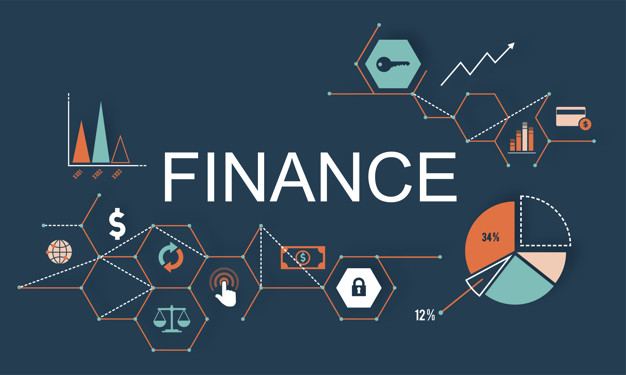
LEO
Oct 25, 2021 14:06

Editor's note: In 1984 to celebrate the 50th anniversary of the issuance of the "Securities Analysis" co-authored by Graham and Dowd, Buffett held a meeting at Columbia University Business School entitled "Graham-Dowd Metropolis Super Investor" (The Superinvestors of Graham-and-Doddsville) speech. Whenever someone questions whether value investing is obsolete, we can go back and read this speech by Buffett.
Graham and Dodd’s "search for value with a significant margin of safety relative to price" security analysis method is out of date? Many professors have made this conclusion in the tome of their textbooks. They keep claiming that the stock market is efficient, which means that the stock price reflects all the information about the company's development prospects and economic conditions. These theorists claim that, because smart stock analysts use all available information to make analysis and judgments, so that the stock price is always correctly maintained at a reasonable level, there are no stocks whose value is underestimated by the market. As for those investors who beat the market year after year, they are just the few lucky ones who have won consecutive prizes in similar lotteries. A professor wrote in his popular textbook today: "If the stock price fully reflects all available information, these investment techniques will be useless.”
Haha, maybe so. But I want to introduce you to a group of investors who have beaten the S&P 500 stock index year after year. Their experience shows irrefutably that the simple view that they continue to beat the market is just an accident. The root cause must be thoroughly explored. The reason for this is that a key fact is that these big stock market winners are all very familiar to me, and they were recognized as super investors a long time ago, and the one who became the latest was also famous 15 years ago. If this is not the case, I just searched thousands of investment records recently and selected a few outstanding individuals to introduce to you, then you can drive me away by hearing this. What I want to add is that their investment performance records have been strictly audited. In addition, I would like to add that I also know many customers who choose these investment managers. The investment income they have obtained over the years is in full compliance with the public investment performance records of these investment managers.
National Coin Tossing Contest
Before we begin to explore the mystery of these investment gurus who continue to beat the market, I would like to invite all of you to join me to watch an imaginary national coin tossing contest. Suppose we mobilize 225 million people in the United States to bet $1 each tomorrow morning, and guess whether a coin thrown on the ground is heads or tails. The winner can win $1 from the loser. Every day the loser is eliminated, and the winner puts all the money they have won into the next day's bet. After ten morning games, approximately 220,000 Americans will win consecutively, each of whom can win slightly more than $1,000.
The vanity nature of human beings will make this group of winners start to be a little proud. Although they want to be as humble as possible, at cocktail parties, in order to attract the goodwill of the opposite sex, they will brag about how skilled they are in flipping coins and how Genius is extraordinary.
If the winner gets the corresponding bet from the loser, in another ten days, (there will be 215 winners who guessed the front and back of the coin 20 times in a row. Through this series of contests, each of them won 100 with $1. Ten thousand dollars. 215 winners won 225 million dollars, which means that other losers lost 225 million dollars.
This group of big winners who have just become millionaires will be so happy that they are likely to write a book-"How can I make 1 million dollars from 1 dollar in 20 days by working 30 seconds a day." What's more, they might fly around the country to participate in various seminars on magical coin tossing techniques, and take the opportunity to laugh at those university professors who are full of doubts: "If this kind of thing is impossible, can it be ours? Did the 215 big winners fall from the world?”
Some professors at the School of Business
Administration may be ashamed and angry about this. They will dismissively point out that even if 225 million gorillas participate in the same coin tossing competition, the results are the same. But I can't agree with this. The winners in the case I mentioned below do have some obvious differences.
The case I mentioned is as follows:
(1) The 225 million orangutans participating in the competition are roughly distributed across the country like the American population;
(2) After 20 days of competition, there are only 215 winners left;
(3) If you find that the 40 winners are all from a very unique zoo in Omaha.
So, you will definitely go to this zoo to find a keeper to ask: What food do they feed the orangutans, whether they have carried out special training on these orangutans, what books are these orangutans reading, and other possible reasons you think . In other words, if the successful winners are unusually concentrated, you will want to figure out what unusual factors are causing the winners to be unusually concentrated.
Graham and Dodd Value Investment
Of course, I think like everyone else, in fact, in addition to geographical factors, there are many other factors that will cause the winners to be very concentrated. In addition to geographical factors, there is another factor, which I call the intellectual factor. I think you will find that the large number of big winners in the investment world are disproportionately from a small intellectual tribe-Graham and Dodd tribes. This kind of concentration of winners cannot be accidental or random. Sexual explanation can only be attributed to this distinctive tribe of intelligence.
This group of successful investors that I want to study has a common intellectual tribal chief-Ben Graham. But when these children grow up and leave this intellectual family, they invest in very different ways. They live in different regions and buy and sell different stocks and companies, but their overall investment performance is definitely not because they make exactly the same investment decisions according to the instructions of the chief. The chief only provides them with the theory of investment decisions. Each student decides how to apply this theory in his own unique way.
The core of intelligence shared by investors from Graham and the Dodd Tribe is to find the overall value of the enterprise. In essence, they took advantage of the difference between the two without paying attention to the issues that efficient market theorists were concerned about-whether stocks should be bought on Monday or Tuesday, in January or July, etc. Investors who follow Graham and Dodd will not waste energy discussing betas, capital asset pricing models, and covariances among different securities investment returns. They are not interested in these things at all. In fact, most of them don’t even know the definitions of these terms. Investors who follow Graham and Dodd only care about two variables-value and price.
I am always surprised to find that so many academic researches are similar to technical analysis, and they are all concerned with stock price and quantity behavior. You can imagine buying a company as a whole because its price has risen significantly in the first two weeks-of course, the reason for the proliferation of research on price and quantity factors is the popular application of computers, which have produced endless stock prices and transactions. These studies are unnecessary because they are useless. The reason for these studies is just because there is a large amount of ready-made data, and scholars have worked hard to learn the advanced mathematical skills of playing with data. Once people have mastered those skills, they will feel guilty if they don't use them, even if the use of these skills has no effect or even a negative effect. As a friend said, to a man with an axe, everything looks like a nail.
Value investment has less risk and higher returns
I am convinced that there are many inefficiencies in the stock market. The success of these "Graham and Dodd Tribe" investors is that they take advantage of the difference between prices and values generated by market inefficiency. On Wall Street, stock prices are greatly affected by the herding effect. When the most emotional, greedy, or depressed people decide how high or low the stock price is, it is difficult to convince people that the market price is rational. In fact, market prices are often ridiculous and stupid.
is the opposite in value investing. If you buy a dollar bill for 60 cents, the risk is greater than buying a dollar bill for 40 cents, but the expected reward for the latter is higher. The investment portfolio based on value structure has less risk but much higher expected return.
Let me give a simple example: In 1973, the total market value of the Washington Post Company was $80 million. At that time, you could sell its assets to any one of ten buyers on any given day, and the price would not be lower than 4 The company owns the Washington Post, Newsweek, and several prominent TV stations. The current market value of these assets is as high as US$2 billion. Therefore, buyers who are willing to pay US$400 million are not crazy.
If the stock price continues to fall, the company’s market value drops from US$80 million to US$40 million, and its Beta value will rise accordingly. For people who use the Beta value to measure risk, the lower the price drops, the greater the risk. This is really a human myth like Alice in Wonderland. I will never understand why it is more risky to spend 40 million dollars than 80 million dollars to buy 400 million dollars. In fact, if you can buy several stocks that are seriously undervalued and are proficient in company valuations, then you can buy $400 million worth of assets for $80 million, especially for $8 million each. This asset valued at 40 million US dollars is basically risk-free. Because you cannot personally manage $400 million in assets, it is not difficult for you to hope and believe that you can find honest and competent managers to manage the company together.
Value investment will continue to beat the market for a long time
Perhaps those of you with more developed business acumen will doubt my motivation for this talk. Letting more people turn to value investing will inevitably make the gap between price and value smaller, which will give me opportunities for my own investment. less. I can only tell you that when Ben Graham and Dodd wrote the book "Securities Analysis" 50 years ago, value investment strategies were made public, but I have been practicing value investment for 35 years, but I have never found anything. The trend of the masses turning to value investment seems that human beings have a certain stubborn nature to make things that are originally simple more complicated. Ships will always sail around the earth, but there are still many people who believe that the earth is flat (the Flat Earth Society). In the stock market, there will continue to be a large gap between price and value, and those investors who believe in Graham and Dodd’s value investment strategy will continue to achieve great success.

Oct 25, 2021 14:06

Oct 25, 2021 14:06